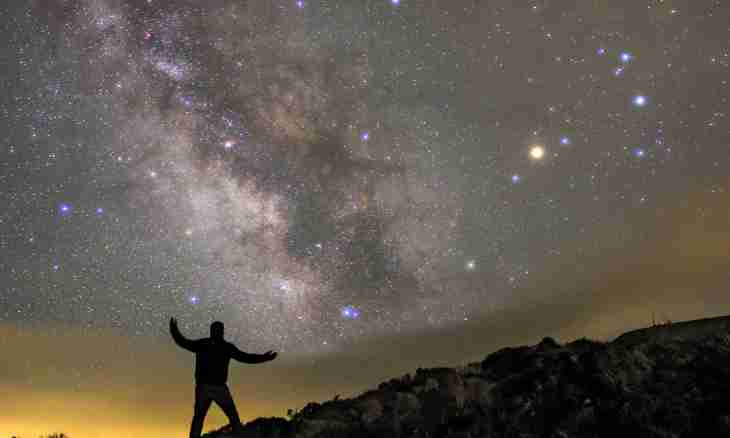Under good conditions of observation naked eye in the sky about three thousand stars are at the same time visible. The brightest stars at each people received the names. Many of them, for example, the Aldebaran, the Deneb and Riegel, have the Arab origin. In ancient times groups of stars were called constellations. In total there are about 85-90 constellations. Constellations of a zodiac circle are considered as the oldest.
It is required to you
- - Field-glass, telescope or telescope;
- - Star chart.
Instruction
1. Now there are 13 zodiac constellations bearing names of real or mythical animals (the zodiac in Greek means "a circle of animals"). During the day stars describe in the sky of a circle with the center in a world pole. The closer to a pole the star, the is less circles. It can turn out that the star never comes for the horizon. Constellations also belong to such nonsetting stars in our latitudes: Ladle of Big Dipper, Little Dipper, Cassiopeia and Dragon.
2. One of the largest northern constellations which seven bright stars form the Ladle of Big Dipper and will be a starting point for search of other stars. It will be simple to find this constellation. It is in the fall in the north, in the winter in the northeast, in the spring directly at you over the head. All stars of Big Dipper have names: Dubkhe in Arab means "bear"; Measures – "waist", Fekda - "hip"; Megrets – the beginning of a tail; Aliot; Mitsar; Al-Qaidas – "owner". All of them are stars of the second or third star size. Near Mitsar it is possible to distinguish a star of the 4th star size — Alkor. With Persian it is translated as "insignificant" or "forgotten".
3. It is much more difficult to look for Little Dipper in city conditions. The fact is that the stars entering this constellation, not such bright. Therefore it is necessary will arm with either the field-glass, or the telescope, or the telescope. If to draw mentally a straight line through two extreme stars of "ladle", then she will point to the Pole star entering the constellation of Little Dipper. It is known also as the Small Ladle. The last star in its "handle" – Polar.
4. Find the constellation of Cassiopeia. For this purpose connect mentally a star of "handle" of the Ladle of Big Dipper, the second from the end, (Mitsar) to the Pole star. Mentally prolong it further, and at the end of a straight line you will see the constellation reminding letter "M" when it is observed over the North Pole of the world in December. In June the constellation is turned and is similar to the letter "W". It will also be the constellation of Cassiopeia. The most part of the constellation lies on the Milky Way and contains many scattered congestions.
5. Between "ladles" of Big and Little Dipper there is a Draco constellation, leaving a little towards Tsefey, Lira, Lebed's constellations. "Head" of a dragon consists of four stars located in the form of a trapeze. Near "head" the bright star is located - it is Vega.
6. To find constellations of Twins, Orion, the Taurus, it is necessary to find the Ladle of Big Dipper for a start. Then to draw a straight line which beginning will be in the most dim star of "ladle" Megrets further on the East through the right extreme Merak. On the way of this straight line two bright stars will meet - it is the main stars of the constellation of Twins. That which is located above, – Castor, and lower — Pollux.
7. Now it is necessary to move further to the southeast. There is a group of stars in which are allocated three especially bright, located almost on one straight line. These stars enter the constellation of Orion and are called "a belt of Orion". To the southeast from Orion the shining blue Sirius, and is located to the northwest – a red Aldebaran.

